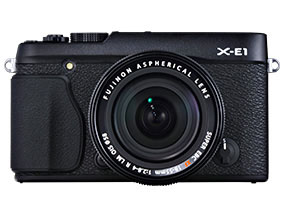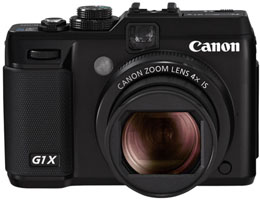I would like to share some updates on current B&H promotions, some of which expire soon.*
Fujifilm
Fujifilm has a current promotion on mirrorless cameras and lenses this month, primarily as bundles when you purchase one or more lenses along with the X-E1 or X-Pro-1 bodies. I recently acquired the X-E1 to augment my Canon DSLR setup, along with several lenses, and I took advantage of one of the bundles. The primary “deal” bundles one of the bodies (X-E1 in black or black-and-silver) with the excellent image-stabilized 18mm-55mm zoom or with one or more of the Fujinon primes: 18mm, 35mm, and 60mm macro. There is also an excellent (though pricey!) 14mm f/2.8 prime – and I can vouch for its fine image quality based on my personal experience.
The number of combinations eligible for this promotion is quite large, so rather than linking to all of them here I have linked to a few basic versions – and you can click through from the landing pages to find the variations. This promotion ends this month.*
- Fujifilm X-E1 Digital Camera Kit (Silver) with 18-55mm zoom lens – $1399
- Fuji X-E1 (black) with 35mm f/2.4 and 60mm macro lenses – $1772
- Fujifilm XF 14mm f/2.8 R Ultra Wide-Angle Lens – $899
- Fujifilm X PRO-1 – $1399 – click on links to lens bundle promotions
Sony
- A Sony promotion offers up to $500 off on Sony Camera and Lens bundles the featuring popular NEX bodies. Expires on March 30, 2013
- Another promotion offers two 16GB Sony SDNC Memory cards for only $18.95 – a “buy one, get one free” deal
- Class 10 UHS-1 Sony SDHC memory cards in 16GB, 32BG and 64GB capacities are in stock and available for $17.50, $27.50, and $59.50 respectively
General
- Nikon D7100 DSLR Camera (Body Only) $1, 196, 95 plus 2% reward. Newly introduced body from Nikon. Limited stock now at B&H.
- 6% “reward” on a number of items including Nikon, Sony, and Canon DSLRs. (The “6% rewards” give buyers B&H credit at 6% of the purchase price. See B&H for details)
Rebates – some expire very soon*
- NEW SONY REBATES SAVE UP TO $500 Expires 3/30/13
- Canon Rebates on DSLR and Lens Bundles
- Canon Rebates on Lenses and Speedlights
- Nikon Buy Together and Save Rebates
- Nikon Lens Rebates
New Arrivals, Interesting & Innovative Items
- Sanho iUSBportCAMERA – $298.98
- Lomography – $249-#349
- Lytro
*Important Note: B&H will be closed from Monday, March 25th through April 2nd in the observance of Passover and will reopen on Wednesday, April 3rd at 9:00AM EDT. Orders placed by 12:00PM Noon EDT on Sunday, March 24th will ship before the closure. Orders placed after this time will ship when B&H reopens. Some current promotions expire at the end of March, but you’ll have to order before the closure if you plan to get them from B&H and take advantage these offers.
© Copyright 2013 G Dan Mitchell – all rights reserved.
 G Dan Mitchell is a California photographer whose subjects include the Pacific coast, redwood forests, central California oak/grasslands, the Sierra Nevada, California deserts, urban landscapes, night photography, and more.
G Dan Mitchell is a California photographer whose subjects include the Pacific coast, redwood forests, central California oak/grasslands, the Sierra Nevada, California deserts, urban landscapes, night photography, and more.
Blog | About | Flickr | Twitter | Facebook | Google+ | 500px.com | LinkedIn | Email
Text, photographs, and other media are © Copyright G Dan Mitchell (or others when indicated) and are not in the public domain and may not be used on websites, blogs, or in other media without advance permission from G Dan Mitchell.


